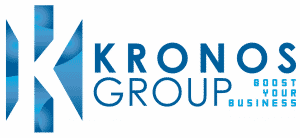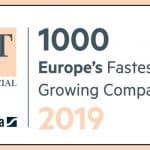Corporate finance risk management: The long-term value it promises

Summary
Risks abound in the contemporary market, and while a business cannot distance itself from every single one of these risks, what it can do is establish a risk management framework that helps identify and categorise these risks.
The three main approaches to risks are avoidance, mitigation, and acceptance, which accounts for a range of risks and threats to a company from both internal and external factors.
Through this approach, a company can allocate financial resources according to the information it continually gleans from the business environment, leading to a more informed decision-making process.
With a resilient risk management process a company can embrace:
Cost efficiency: When a company is reacting to crises instead of proactively preparing for them, the cost of responding to crises tends to be higher than if these resources were allocated in advance for these eventualities. With risk management, finance professionals can create proactive strategies and budgets to protect a business from reactionary spending.
A culture of risk management also gives way to training opportunities that will keep team members informed of new developments and lead to higher value addition across the board.
Sustainability: The risks a company faces are not simply financial. It also includes the environment, employees, and other business stakeholders. Risk management can help inform sustainability measures and strategies while balancing the financial, environmental, and human impacts of a crisis simultaneously.
This approach helps to build a more sustainable, ethical, and future-focused business environment.
A business can never separate itself from the many risks that follow every business venture, operation, and even daily task.
Contemporary companies are more aware than ever of the stakes that threaten their structures, should a company ever give into the risks that abound in the competitiveness of the global landscape.
This does not, however, mean that companies must resign themselves to accept every risk that comes their way and budget accordingly. Having operated in this market, every finance and business professional is already aware of this fact.
While a company cannot prepare for every risk—shock events like COVID-19 and other external factors are more likely to increase in frequency than the decrease in the future—it can still establish a structure of corporate finance risk management that can respond proactively as opposed to simply reacting to risks as and when they threaten the integrity of business structures.
With a risk management structure in place, your company commits to not just identifying risk factors but assessing each factor and identifying how relevant it is to your business. With this careful analysis, you are then more prepared to formulate an appropriate response to each potential risk.
The three main responses to identified risks are avoidance, which helps cut the risk out altogether to avoid the harm it could cause; mitigation, where a company takes steps to lower the possibility of the risk occurring even if it is not able to void the risk entirely; and finally, acceptance of risk factors that a company cannot feasibly mitigate or avoid but must prepare to respond to should it materialise.
A consistent and reliable risk management framework does not just provide a security blanket that insulates your business from potential harm. The fact that one key response to corporate finance risk management is the acceptance of some risks proves that for a business operating in today’s climate, being able to read and analyse market behaviours and consequently operate with more insight into what the future may hold is in itself an effective risk-proofing method.
If your approach to risk management is strategic with an eye on value addition, this aspect of business operations has the capability to drive short and long-term value across your operations and not just your finance functions.
With a risk management framework in place your company can:
Operate with greater cost-efficiency
Having a proactive approach to risk management means that your finances are under less strain.
Your finance teams are able to use risk identification strategies to budget accordingly and organise resources in a more efficient and future-focused methodology.
This means that when a crisis does arise, your finance function is prepared to meet them without infringing on short and long-term objectives and the achievement of these objectives. Your company finances have already been allocated in such a way to make this possible and cut down on the wastage of reactionary spending and the cost of unplanned financial moves.
Yet another way corporate finance risk management is a more cost-efficient way of operating is because employees and team members across the board are exposed to a culture in which risk management is prioritised. This means that team members can also be given the necessary training to make risk management a feasible, value-added feature of business operation—an immediate advantage that will result in a more comprehensive, crisis-ready risk management structure.
Build more sustainable practices
A risk management strategy prepares for risks that could potentially arise in the future and can safeguard not just bottom lines but also the environment, employees, and other business stakeholders in the process.
The sustainability measures and priorities a company sets can be informed and influenced by risk management strategies and the information it derives about the possible future of a company.
In a post-COVID-19 world that has to reckon with both the financial, environmental, and human impacts of COVID-19 in tandem, it is clear that the future of risk management will need to keep an eye on these factors.
With this in mind, a more sustainable business environment can be formulated and supported by every function of a company as well.
Invest in resilient business operations with corporate finance risk management
Like we covered early on, risks are necessary for a business that is not just operating in the contemporary market but trying to thrive in that same environment.
Any big move a business makes is loaded with risk that has the potential to pay off in accelerated growth, more innovation, and greater opportunities in the future.
A risk management structure only serves to formalise this process and protect the functions, value, and teams that already exist.
With these measures in its arsenal, a company stands to benefit from the short and long-term finance transformation it offers.




